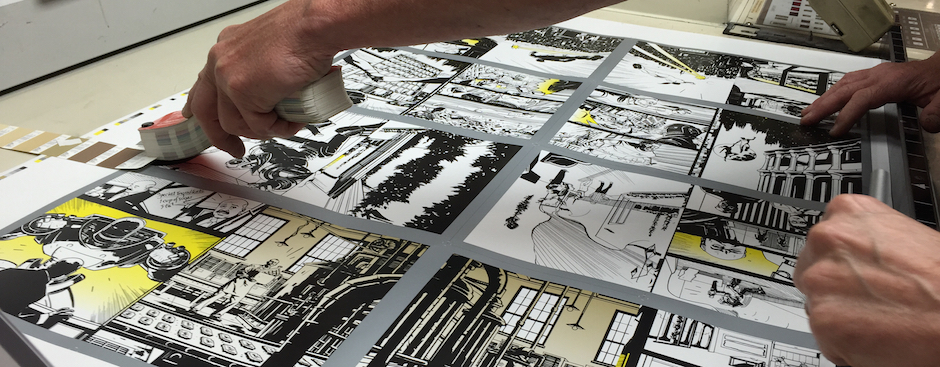Printing is complicated, and our estimates often involve industry terms and shorthand. Here is a quick guideline on how to read one of our estimates, as well as some basic information to include when preparing your own estimate request.
Project name
Print quantity
Page count
Flat size (if needed)
Finished size
Paper
Ink
Finishing
Project name
Every project needs a title!
Print quantity
Do you need 5 of something (giant foamcore posters maybe) or 500,000 (perhaps a postcard)? Let us know here.
Page count
How many pages is the piece? Some quick guidelines: anything on just one sheet of paper is a “single leaf”, this is technically 2 pages (front and back). A single leaf folded in half (for example, a birthday card) becomes a 4-pager. A “trifold,” which is a single leaf folded into thirds, is a 6-pager. And so on.
When we talk about books or booklets, we distinguish between the text (inside) pages and the cover (outside, typically on stiffer paper) pages. So a book that is described as “36 page text plus 4 page cover” would be constructed as follows: 18 inside leaves (each leaf is 2 pages, front and back), plus the 4 pages of a cover: front cover, inside front cover, inside back cover, and back cover.
Flat size
The full height and width at which the job is printed. For a single leaf, the flat size and finished size will be the same. For a 4-pager, the height or width of the flat size is double that of the finished size (a common size is 8.5” x 11” folded down to 8.5” x 5.5”).
For many projects - such as packaging cartons, capacity pocket folders, perfect bound books with a spine, custom construction projects, and so on - it may be advisable to consult with us before finalizing the flat size of the file. Our layouts can often be created to maximize usable space on the paper or to minimize time in the bindery, which can save thousands of dollars over the course of a project.
Please note, it is not necessary to provide a flat size to receive an estimate. We only need a desired finished size in order to calculate the optimal flat size of the piece.
Finished size
The size of the final deliverable, after all printing, folding, bindery, and so on is completed.
Paper
The paper used for the project. A superquick guideline: coated is generally smooth and shiny whereas uncoated tends to be toothy and dull. Gloss coated is shinier than silk coated is shinier than matte coated which has almost no shine. Cover is thicker than text. Paper thickness (“weight”) is denoted by pounds (#), 80# or 100# is most common. As a reference, a page from a magazine might be 80# text while a birthday card may be on 100# cover.
Ink
The inks and coatings used for the project. This line might read as follows:
4/C/P + PMS 182 + OA Satin AQ 2/S = 6/6
which translates as:
Four color process inks, plus Pantone color #182, plus an overall satin aqueous coating, all on both sides, equals six inks/coatings on the front and six inks/coatings on the back.
(Most “regular” printing is 4/C/P, the colors being Cyan, Magenta, Yellow and Black which are used to create all other colors. PMS colors are used to match a very specific color, like a logo for a brand. Aqueous (water-based) coatings are most frequently used to protect a piece, as well as to instantly dry it, allowing for quicker turnaround times.)
Finishing
Anything that must be done to the piece after printing. A few common steps:
Trim - cut into rectangles
Die cut - for cutting custom shapes (for example, a pocket folder)
Die score - recommended when folding 100# text or heavier, to prevent cracking
Insert - common for mailers with multiple pieces or with variable data inserts
Affix - can be a PI, USB flash drive, strip of adhesive tape, or many others
Saddle Stitch, Perfect Bind, or Case Bind - bindery for books or booklets
Shrink wrap - group and/or protect a finished piece
Carton pack - for projects where many pieces ship to one location
Seal, address, and mail - yes, we offer mailing services!
Foil stamp - for a classy look and metallic shimmer
Spot UV coat - draw a viewer’s gaze or add a glossy shine to photos
And many more! Please, don’t hesitate to ask.
And remember - you do not need to fill everything out if you’re unsure of something! We are happy to break out estimates for multiple options, or provide recommendations upon request - and nothing beats a real conversation with a real expert when hammering out the gritty details of your next big thing.
Posted in: Helpful Hints



